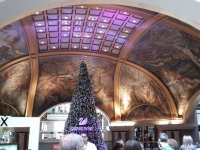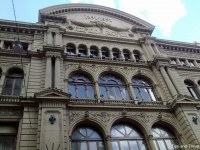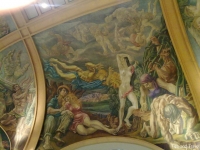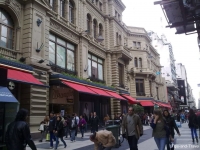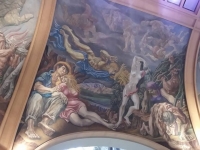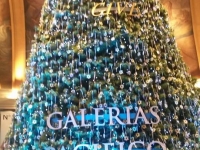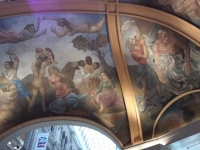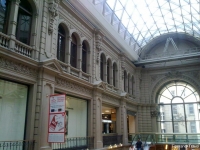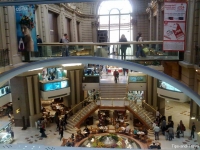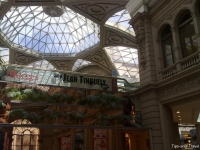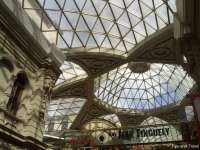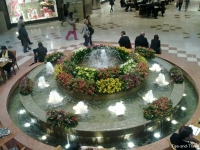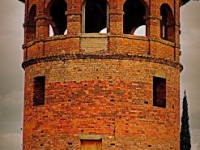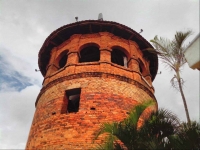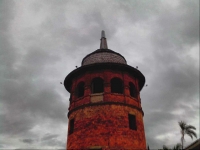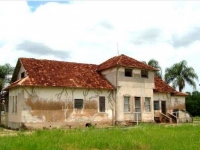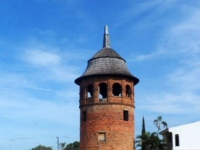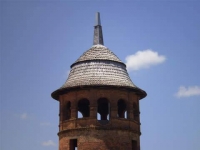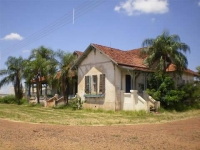Category: South America
Galerías Pacífico, Buenos Aires, Argentina
Galerías Pacífico is one of the largest and most traditional shopping centers in Buenos Aires. This is the most frequented by tourists, the shopping center is home to the prestigious international brands, has a major restoration and the prestigious Borges Cultural Centre is located in an area of the building. It occupies an entire block and the streets surrounding it are Florida, Córdoba, San Martin and Viamonte. The building was built in 1881 as a commercial place to a shop by departments ‘Au bon Marché’, at this time, one of the most important in the Argentinian capital, it welcomed since 1896 the Museum of fine arts, today located in another place. In the year 1908 a part of the building was sold to the Buenos Aires Pacific Railway, from whom it took its current name. The emblem of the Galerías Pacífico was established in 1945 and at the same time they built the magnificent Dome with murals of the prestigious masters, Antonio Berni, Lino Spilimbergo, Juan Carlos Castagnino, Demetrio Urruchúa, and Manuel Colmeiro, being this last one the only foreigner one. In 1989 the building was declared a National Historic Monument and it was completely renovated and transformed in a luxury Mall. The project was made by the architect Juan Carlos López. At this time, four murals of Argentinian artists have been incorporated: Roux, Alongo and Josefina Robirosa. Its beautiful architecture and works that contains make that tourists consider it one of the most beautiful malls in the world.
Tips
Do not forget your camera when you visit this mall because you will regret it deeply. It is one of the few commercial places where buy remains the second option before such artistic beauty.
You can take advantage of the visit to several things that also have nothing to do with shopping. This shopping centre has a concert hall and an exhibition room, then go to the information centre for more information on what is happening at the time of your visit especially if you like tango because tango shows are very demanded by tourists.
You will also find ATMs if you need to withdraw money from your bank account even as places to make international calls or Internet connection.
If you do not already know the “alfajores” (Argentinian typical pastry), take your time and enjoy one with a good coffee, at the cafe called “Havanna” (also one of the trademarks of the alfajores) which, according to the majority, are the best.
President Venceslau’s observation tower, President Venceslau, São Paulo, Brazil
President Venceslau’s observation tower has the Dutch style. But, in fact, it was the work of a Portuguese engineer Álvaro Coelho built in 1927 with four brick floors and wooden roof, with a structure reinforced with concrete base and the railway rails- exactly slabs beams are made of train tracks!
Coelho came to Brazil to sell land through a company he owned. Arrived at the Paulista West which was not yet President Venceslau where there were some explorers and many indians; he bought a large farm, built a luxurious site and this such observation tower from where he could see the horizon of his land and prevent the possible invasions of indians and “competitors” in the business.
For a long time, although useful in the safety of the earth, the observation tower of the highly innovative standards architecture for Brazilian structures at that time, even more for this corner of the State, served as a decoration, the site of the farm, which also became known as the Palace of Álvaro Coelho at the reception of the large dinners of high society, being visited by Brazilian politicians and even abroad, for example a Hungarian Minister visited it.
Álvaro Coelho became the first mayor, who then created the first municipality that President Venceslau had. Thus, the village grew. He sold the land and the farm was reduced. But the tower continued to attract curious eyes of residents and visitors.
Tips
The site is free and of an unrestricted access, the same for photos but as this is a hot country region, you will need solar filters, protectors against insects and water for hydration.
